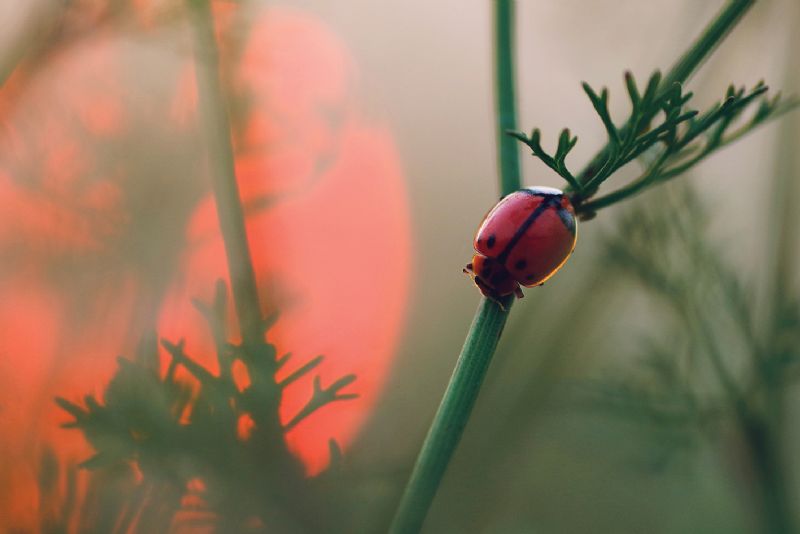- Home
- News, Articles & Reviews
We are hiring! Please click here to join our growing magazine delivery team in Gloucestershire!
Areas
Pets & Wildlife
Archive

Halloween Ladybeetles
All Areas > Pets & Wildlife > Wildlife Matters
Author: Dorothy Glen, Posted: Tuesday, 25th October 2022, 09:00
Ladybirds may be the nation’s favourite beetle. Instantly recognisable for their cheerful colours and comforting roundness, they are a gardener’s friend and are magical to children.
The name ‘ladybird’ originated in Medieval Britain as a reference to the Virgin Mary, who was often painted wearing a red cloak. One story I read says that people prayed to the Virgin Mary for help after insects repeatedly destroyed crops. Soon after, huge numbers of ladybirds arrived and decimated the pests. The harvest was saved and the ladybirds were called ‘Beetles Of Our Lady’, which became ‘Lady Beetles’, and then ‘Ladybirds’.
Excellent pest control
Ladybirds of all species (27 in the UK) are still excellent pest control, as they happily feast on aphids, scale insects and other ‘plant-feeders’ which, left unchecked, can cause significant damage to plants and crops. They are so effective that you can buy packs of ladybirds online to release into your garden. This is much better than using pesticides.
Unfortunately, because of this reputation, large numbers of Asian harlequin ladybirds were introduced to the USA in 1979 for pest control. Harlequins spread rapidly and are now the most common species in the USA. Having reached our southern shores in 2004, they are now one of the UK’s most common ladybirds too. In fact, in Gloucestershire they may already be the most common.
Harlequins eat the larvae of other ladybirds
This is bad news for our native ladybirds, because as well as aphids, the voracious harlequins are also happy to eat the larvae of other ladybirds. The number of two-spot ladybirds has already declined dramatically since the harlequin arrived.
The other reason the harlequins are tarnishing the reputation of the humble ladybird is because they like to hibernate indoors, often in large numbers. If you have noticed the beetles repeatedly finding their way inside at this time of year, they will be harlequins making a nuisance of themselves, whereas our native species are content to hibernate outdoors.
Their pattern varies
Because they start to invade houses around 31st October, harlequins are known in the USA as ‘Halloween ladybeetles’. In the UK, we don’t yet have a common nickname for the harlequins, but you can easily recognise them as they are larger than our native species and have brown legs. Most commonly they are red with 18 spots, or black with four red spots, but their pattern varies greatly.
So when you see these familiar insects, have a closer look and see what you’ve got. In a way, the prevalence of the invasive harlequins makes our beloved native ladybirds even more special.Other Images
Copyright © 2025 The Local Answer Limited.
Unauthorized use and/or duplication of this material without express and written permission from this site's author and/or owner is strictly prohibited. Excerpts and links may be used, provided that full and clear credit is given to The Local Answer Limited and thelocalanswer.co.uk with appropriate and specific direction to the original content.More articles you may be interested in...


© 2025 The Local Answer Limited - Registered in England and Wales - Company No. 06929408
Unit H, Churchill Industrial Estate, Churchill Road, Leckhampton, Cheltenham, GL53 7EG - VAT Registration No. 975613000You are leaving the TLA website...
You are now leaving the TLA website and are going to a website that is not operated by us. The Local Answer are not responsible for the content or availability of linked sites, and cannot accept liability if the linked site has been compromised and contains unsuitable images or other content. If you wish to proceed, please click the "Continue" button below:




